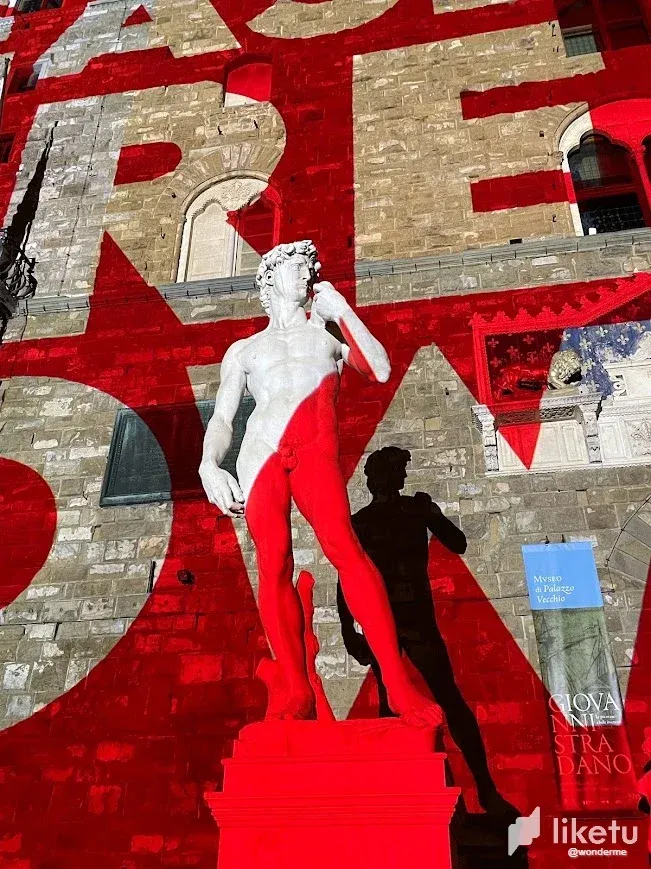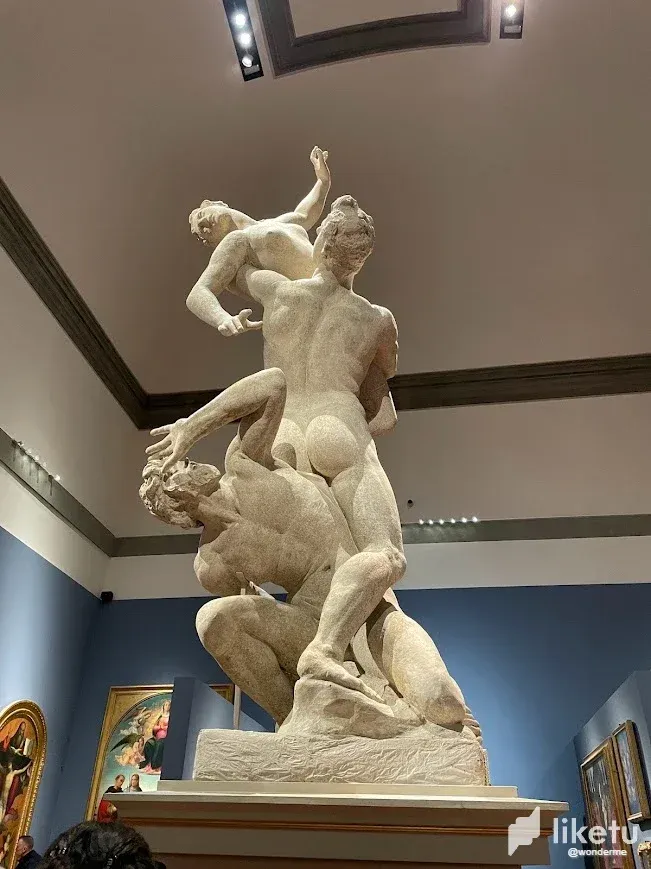







¡Hola Viajeros! Estoy muy feliz de contarles mis anécdotas viajeras y artísticas de Italia. Además de ser un país hermoso, con comida inigualable y estructuras históricas preciosas, Italia ofrece la oportunidad de ver de cerca el trabajo de genios artísticos. A mi parecer, incluso si no eres un amante del arte o conocedor de artistas como Miguel Ángel, Da Vinci o Botticelli, de seguro te impresionarás con los detalles de obras renacentistas que deslumbran, aún más al saber que muchas de ellas fueron hechas entre los siglos XV y XVII y que aún así se conservan en museos en perfecto estado y fueron hechas con técnicas realistas muy finas.
En mi viaje por Italia visité las ciudades de Roma y Florencia, esta última me dejó deslumbrada y confieso que fue mi favorita. Florencia es la capital del arte renacentista del mundo y la cuna de personajes históricos como Leonardo Da Vinci, Galileo Galilei, Dante Alighieri, Maquiavelo y Amerigo Vespucci. Al enterarme del nacimiento de tantos personajes importantes en esta ciudad me hizo pensar que los florentinos tienen algo especial y que me gustaría vivir allá por algún tiempo, también entendí por qué los artistas escogían esta ciudad para tomar inspiración para sus obras, es simplemente IMPRESIONANTE.
En la ciudad de Florencia hay museos muy importantes como el museo de Uffizi y el museo de la Academia, tuve la oportunidad de visitar este último que alberga obras de artistas como Miguel Ángel Buonarroti, Giambologna, Alessandro Allori, Domenico Ghirlandaio y Sandro Botticelli, entre otros. La obra más destacada y que recibe más visitas, y también por la cual decidimos entrar a este museo, es el David de Miguel Ángel.
El David es una escultura de 5.17 metros que fue tallada entre 1501 y 1504, cuando el artista renacentista Miguel Ángel tenía tan solo 25 años. Es una escultura hecha en mármol blanco y representa al bíblico David, el joven héroe que derrotó al gigante Goliat con una honda. Esta escultura estaba ubicada originalmente en la Piazza della Signoria, en frente del Palazzo Vecchio, en este lugar actualmente hay una réplica (la foto en la que ven iluminado al David con colores rojo y blanco), ya que el David original fue trasladado al museo de la Academia en 1873.
Otra escultura que me enamoró fue El Rapto de Las Sabinas de Giambologna, la audioguía del museo indicaba que es necesario rodear la estatua mientras la observas para detallar cada parte de ella, pues en movimiento puedes ver la sinergia perfecta de 3 personas entrelazadas y cómo el artista logró representar el dinamismo de la escena. Esta estatua cuenta cómo los romanos, liderados por Rómulo, raptaron a mujeres sabinas durante un festival en Roma, para convertirlas en sus esposas y madres de hijos romanos. La obra original de Giambologna fue tallada en cobre por orden de Francesco I de' Medici, que para el momento fue el gran duque de Toscana, para ser puesta en el jardín de su Palazzo Vecchio, sin embargo hoy se encuentra en la Piazza della Signoria (foto) y una copia en mármol en el museo de la Academia (foto).
¡Florencia es una ciudad fascinante llena de cultura, historia y arte! ¡No puedo esperar para contarles acerca de otras partes hermosas que visité de la ciudad! ¿Sabían que el nombre en italiano de Florencia es Firenze?
English Here!
Hello Travelers! I'm very happy to share with you my traveling and artistic anecdotes from Italy. Besides being a beautiful country with unparalleled food and precious historical structures, Italy offers the opportunity to get up close with the work of artistic geniuses. In my opinion, even if you're not an art lover or knowledgeable about artists like Michelangelo, Da Vinci, or Botticelli, you'll surely be impressed by the details of Renaissance artworks that dazzle, even more so knowing that many of them were created between the 15th and 17th centuries and are still preserved in museums in perfect condition, made with very fine realistic techniques.
On my trip to Italy, I visited the cities of Rome and Florence, the latter left me dazzled and I confess it was my favorite. Florence is the capital of the Renaissance art world and the birthplace of historical figures such as Leonardo Da Vinci, Galileo Galilei, Dante Alighieri, Machiavelli, and Amerigo Vespucci. Learning about the birth of so many important figures in this city made me think that Florentines have something special, and I would like to live there for some time. I also understood why artists chose this city to draw inspiration for their works, it's simply IMPRESSIVE.
In the city of Florence, there are very important museums such as the Uffizi Gallery and the Accademia Gallery. I had the opportunity to visit the latter which houses works by artists such as Michelangelo Buonarroti, Giambologna, Alessandro Allori, Domenico Ghirlandaio, and Sandro Botticelli, among others. The most outstanding work and the one that receives the most visitors, and also the reason we decided to enter this museum, is Michelangelo's David.
David is a 5.17-meter sculpture that was carved between 1501 and 1504 when the Renaissance artist Michelangelo was only 25 years old. It is a sculpture made of white marble and represents the biblical David, the young hero who defeated the giant Goliath with a sling. This sculpture was originally located in the Piazza della Signoria, in front of the Palazzo Vecchio, in this place there is currently a replica (the photo where you see David illuminated with red and white colors), since the original David was moved to the Accademia Gallery in 1873.
Another sculpture that I fell in love with was The Rape of the Sabine Women by Giambologna. The museum's audio guide indicated that it is necessary to surround the statue while observing it to detail every part of it because in motion you can see the perfect synergy of 3 intertwined people and how the artist managed to represent the dynamism of the scene. This statue tells how the Romans, led by Romulus, abducted Sabine women during a festival in Rome, to make them their wives and mothers of Roman children. Giambologna's original work was carved in bronze by order of Francesco I de' Medici, who at the time was the Grand Duke of Tuscany, to be placed in the garden of his Palazzo Vecchio, however, today it is located in the Piazza della Signoria (photo) and a marble copy in the Accademia Gallery (photo).
Florence is a fascinating city full of culture, history, and art! I can't wait to tell you about other beautiful parts I visited in the city! Did you know that the Italian name for Florence is Firenze?
For the best experience view this post on Liketu
Congratulations, your post has been added to Pinmapple! 🎉🥳🍍
Did you know you have your own profile map?
And every post has their own map too!
Want to have your post on the map too?
Travel Digest #2166.
Become part of our travel community:
- Join our Discord
Hiya, @ybanezkim26 here, just swinging by to let you know that this post made it into our Honorable Mentions in Your post has been manually curated by the @pinmapple team. If you like what we're doing, please drop by to check out all the rest of today's great posts and consider supporting other authors like yourself and us so we can keep the project going!Congratulations @wonderme! You have completed the following achievement on the Hive blockchain And have been rewarded with New badge(s)
Your next target is to reach 1250 upvotes.
You can view your badges on your board and compare yourself to others in the Ranking
If you no longer want to receive notifications, reply to this comment with the word
STOPCheck out our last posts: